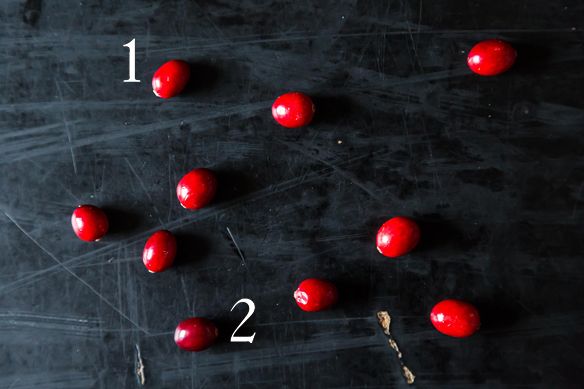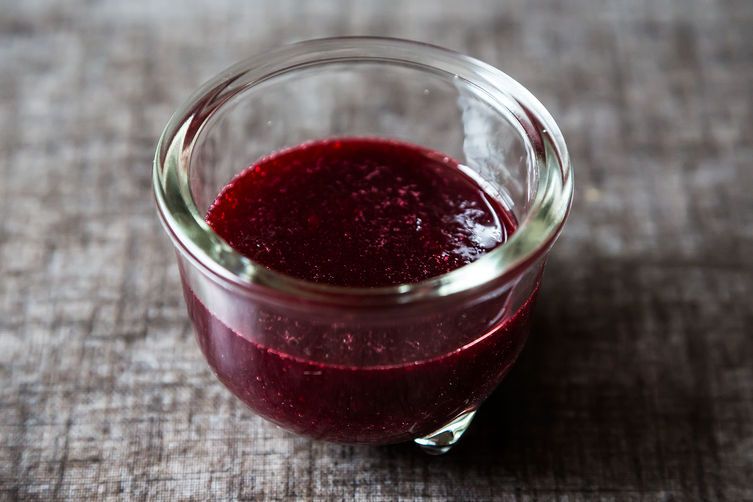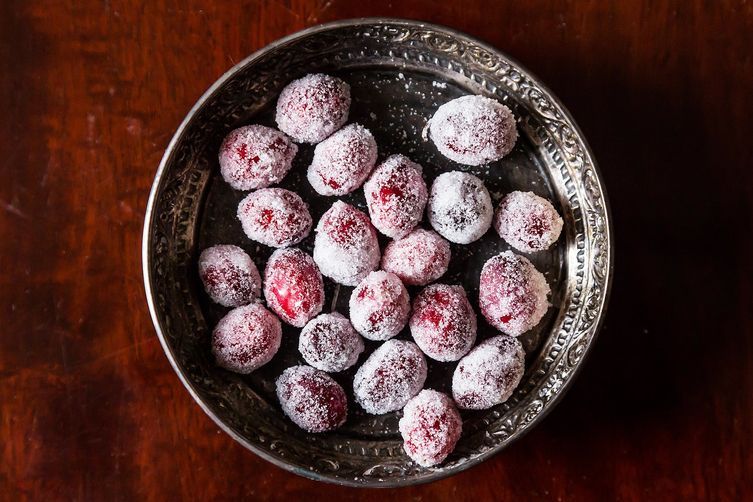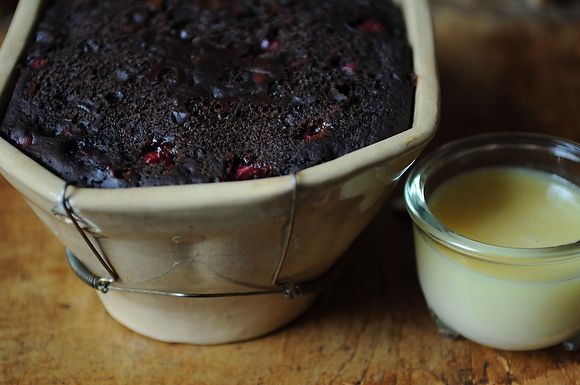Every week we get Down & Dirty, in which Nozlee Samadzadeh breaks down our favorite seasonal fruits, vegetables, and more by the numbers.
Today we're learning all about the jewel-like cranberry as it goes from puckeringly sour in the raw to richly sweet when cooked. Native to this continent and a close cousin to blueberries, lingonberries, and huckleberries, the cranberry is so much more than just a Thanksgiving one-off. As American as apple pie? Try as American as cranberry sauce!

1. Origin Stories: Cranberries grow on trailing evergreen vines, preferring sandy, loamy, well-irrigated soil (in a word, bogs) to the garden beds that other berries might require. Their growing cycle runs long -- 16 months! -- with a dormancy period in cold weather that triggers its spring growth spurt, similar to onions and garlic. The common image of cranberry farms is that they're constantly underwater. This isn't entirely true: cranberry bogs are flooded when in bloom to protect their delicate flowers from frost damage, and the bogs are flooded again at harvest so the berries can rise to the surface for easy gathering, but otherwise they stay merely well-watered, not drowned. (With proper soil, irrigation, and fertilization, it's possible to grow cranberries at home -- a vine cutting quickly takes root in new soil.)
2. Color Theory: Ripe cranberries are always red, right? Not so. When they reach full ripeness, cranberries are still white. (This is why it is possible for white cranberry juice to exist.) The extra few weeks it takes them to develop color minorly changes the berries' pectin and sugar content, but is otherwise an aesthetic development. Different varieties of cranberry result in different shades, from deepest black-burgundy to a much lighter range of red-pinks. (Of course, darker berries lend richer color when cooked.) Cranberries are a native plant, but almost all berries sold in stores are of the hybrid Stevens variety, grown to be hardy, large, and prolific. In recent years, older cultivars such as Early Black, Early Red, and Howe have started cropping up at farmers' markets -- keep an eye out for their range of colors and sizes!

3. Skin Deep: Pectin. It's what makes gelée gel, and cranberries have it in spades in their skins and seeds. Without getting overly scientific, heating cranberries causes them to break down and dissolve the pectin within, and the berries' high acidity lets the pectin gel at a much lower sugar percentage than a normal jam would require. (Orange peel also contains pectin, which is why it's a common addition to gelled cranberry sauces.) Canning enthusiasts are welcome to pipe up with additional cranberry facts!
This year, make a resolution to break cranberries free of their side dish status: add them to muffins, stir them into a braise, or candy them whole for an impressive cocktail snack. A final tip: while bags of fresh cranberries are ubiquitous come November, you can find them in your grocery's freezer aisle during the off-months. They defrost well and lose none of their sweet-tart potency, letting you bring cranberries to the table in any season.



Photos by James Ransom
I'm Nozlee Samadzadeh, a writer, editor, farmer, developer, and passionate home cook. Growing up Iranian in Oklahoma, working on a small-scale organic farm, and cooking on a budget all influence the way I cook -- herbed rice dishes, chicken fried steak, heirloom tomato salad, and simple poached eggs all make appearances on my bright blue kitchen table. I love to eat kimchi (homemade!) straight from the jar and I eat cake for breakfast.







See what other Food52 readers are saying.